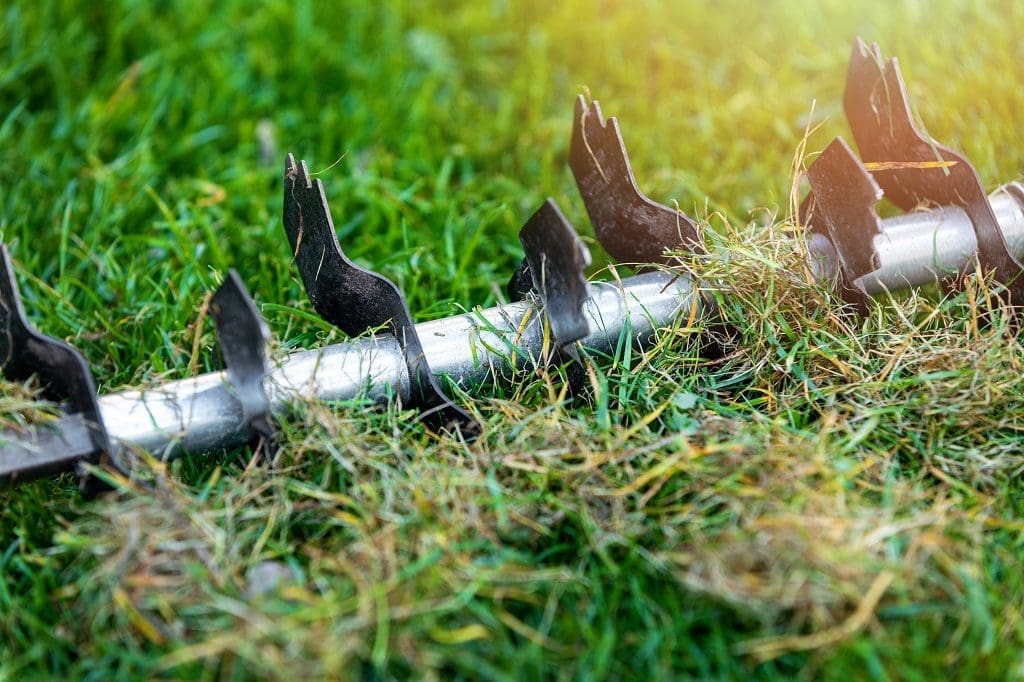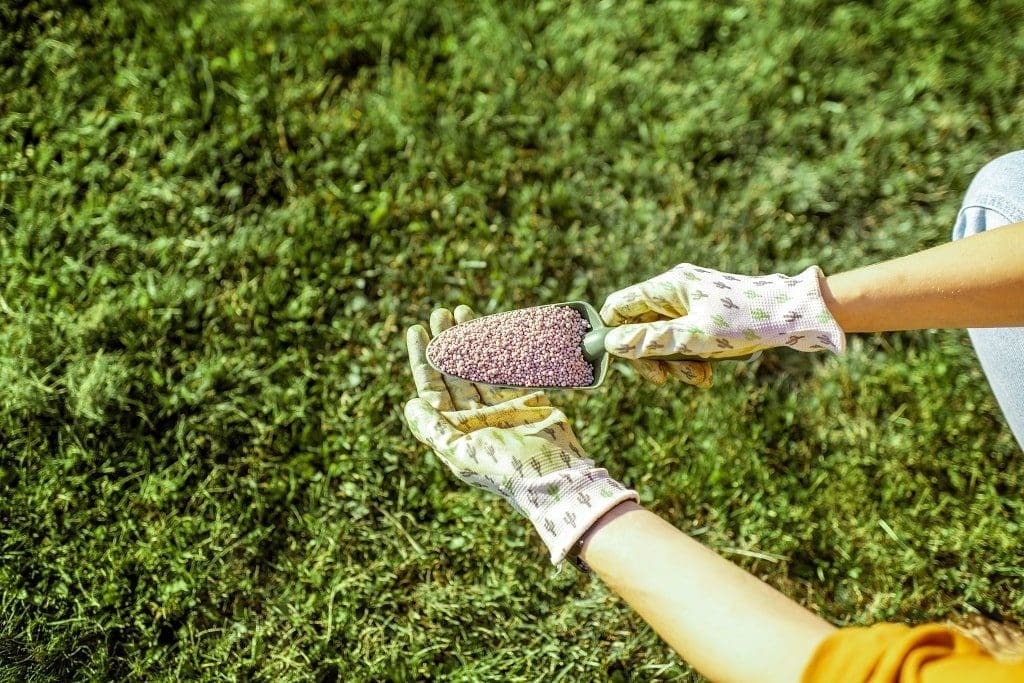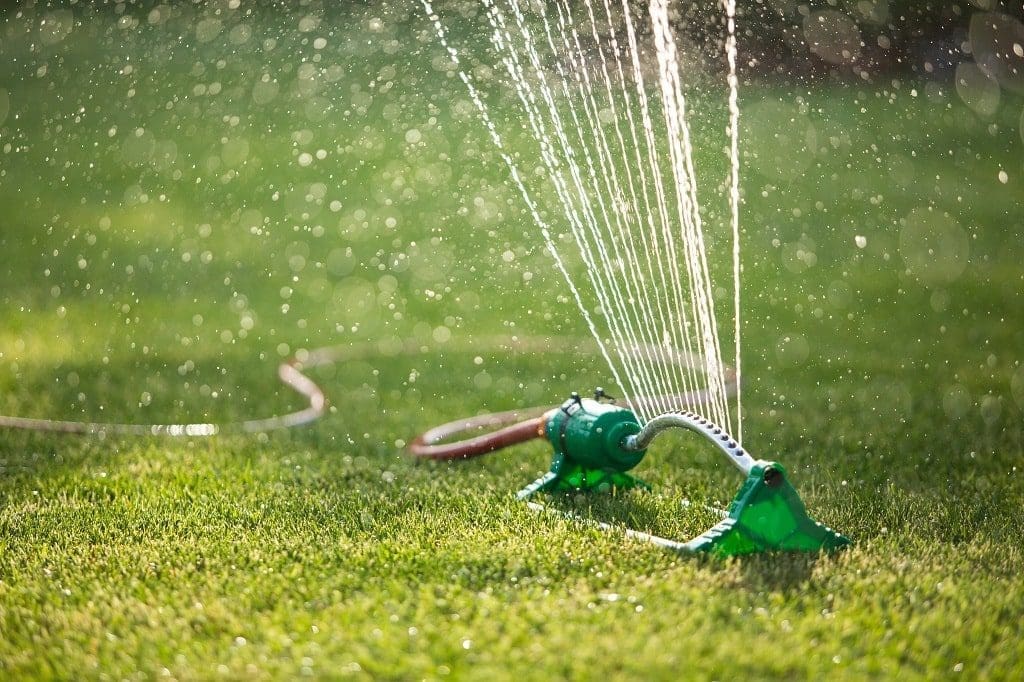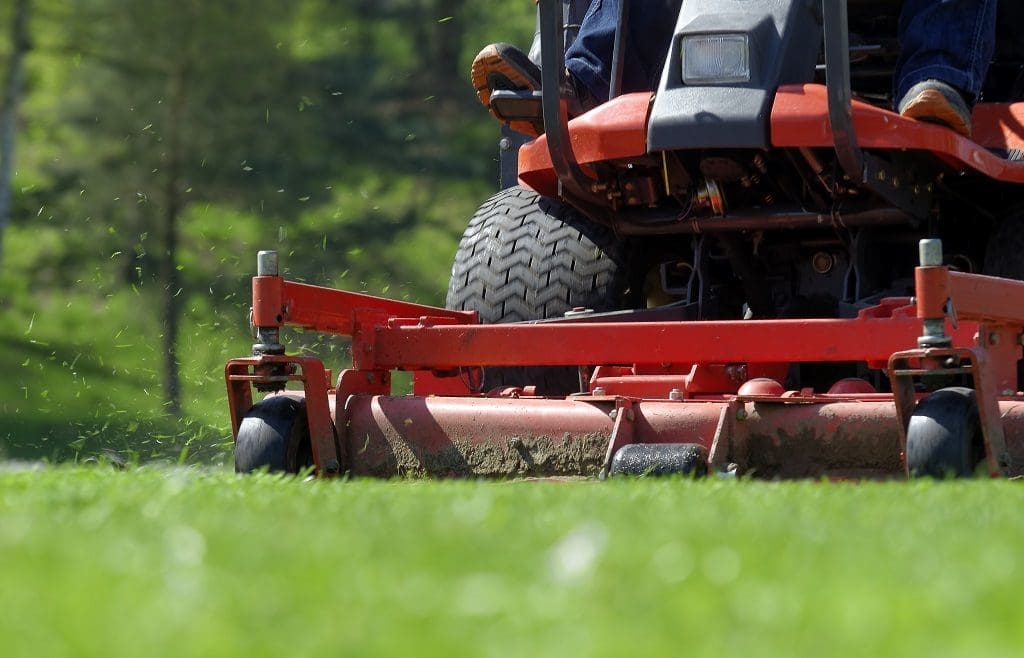The grass is sometimes greener on the other side – but it doesn’t have to be! Noticing that your neighbor’s lawn is thriving, while you’re struggling to just keep yours slightly green? We feel you. Getting a spring green lawn isn’t easy, but with the warmer season quickly approaching, it’s time to get that lawn into shape!
To have your lawn looking lush and green, our experts at Earth Development have put together our top tips for green grass to have your lawn looking better than ever.
What Grass Do You Have?

Did you know that there are different types of grass? Before you get into perfecting your spring grass care, you’ll want to first figure out what kind of grass you are dealing with in the first place.
There are two basic categories for grass – warm and cool season. These different categories have different needs, particularly when it comes to mowing. You need to have just the right height of grass for each season to keep it healthy and strong.
Let’s break it down.
For warm-season grass, these are the heights to aim for with each:
- Bahiagrass should be around 2-2.5 inches
- Bermudagrass should be 1-2 inches
- Centipedegrass should be 1-1.5 inches
- Zoysiagrass should be 1-2 inches
- Augustinegrass should be 2-4 inches
For cool-season grass (typically found in the northern parts of the country!), we recommend:
- Tall Fescue should be 2.5-3 inches
- Fine Fescue should be 1-1.5 inches
- Kentucky Bluegrass should be 1.5-2.5 inches
- Ryegrass should be 1-2 inches
Green Lawn Aeration

When it comes to tips for healthy lawn finishes, one of our top recommendations is aeration.
Over time, the soil gets more and more compact. Why does this matter? When soil is really compact, it doesn’t allow for an ample amount of air circulation, nutrient absorption, or water drainage, causing your lawn to look lackluster.
This is why aeration is so important. For a healthy green lawn, aeration makes a world of difference. This involves using an aerating tool that takes small plugs of soil out of the ground, freeing it up and making it less compact so it can better receive water and nutrients. We recommend aerating in the fall and spring, and you should do this before fertilizing!
You can DIY this project using a screwdriver to plug into the soil, or a team of professionals can do the job for you. Either way, this is the key secret to a green lawn.
Spring Grass Fertilizer

It’s important to feed your lawn to keep it strong and healthy. How do we do this? With fertilizer! For luscious spring grass, fertilizer is the answer.
Before beginning the fertilizing process, you’ll want to test the soil. This will find out what nutrients it’s missing and the pH so you can find the best fertilizer to get it back on track. You can do this pretty easily by sending your soil out for testing or having a professional come and do it for you.
Once you’ve nailed down what your lawn needs, it’s time to get to feeding. Based on the results of the soil tests, you can determine the best fertilizer for green grass that’s unique to your lawn, but we typically recommend a slow-release fertilizer. Your local garden store can help you find the right fit based on your soil’s results!
We recommend using a spreader to evenly apply the fertilizer across your lawn for all-over treatment, and you’ll want to be sure to water it every single day for the week after.
Watering Your Lawn

We really cannot emphasize enough how important it is for greens lawn care that you water your grass.
But how much does a lawn need? A classic rule of thumb is that a lawn needs about an inch of water per week. Sometimes, it will rain enough to take some tasks off your checklist, but if not, you’ll want to set up a watering schedule to ensure your lawn gets ample hydration. For green grass to grow, it needs enough water, and the best way to achieve that vibrant earthy hue is with regular, deep waterings.
Our basic watering tips are:
- Hydrate grass with about an inch of water each week
- Water at the end of the day to avoid evaporation
- You can skip watering if it rains!
While this isn’t a complicated task, getting your watering schedule right is key to maintaining the health of your lawn.
Mowing is Essential

Time to give your lawn a fresh haircut! Like with your hair, a little trim now and then can help promote growth and get rid of those split ends – and it’s no different with grass!
Mowing not only refreshes your blades of grass but can help with the root system of your lawn. Plus, keeping grass shorter in the spring can limit weeds for a rich, weed-free lawn. However, keep it long after this first cut and through the summer – this will ensure your lawn is super luscious.
Be sure not to cut your lawn too short! Our green lawn tips for mowing are to err on the side of caution, cutting only about 1/3rd of the blade with each mow.
Conclusion
Excited to finally achieve the perfect spring green lawn? With our green lawn tips and tricks, you can have a perfectly luscious, green lawn that is the envy of all your neighbors.
Whether you just have a few questions about the best tricks and tools for your spring grass care or are hoping a professional can take over the task for you, Earth Development is equipped with the knowledge and skills to help. For help with your green lawns, call us at 920-406-7501.
